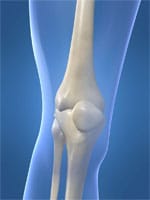
RHEUMATOID ARTHRITIS
Causes of Rheumatoid Arthritis
By :Dr.Ashraf Esmaeil
Consultant of Rheumatology
UDH
• RA is a chronic inflammatory disease affecting the synovium and leading to joint damage and absorption of adjacent bone. It affects more the small joints of the hands, and has an extra-articular manifestation.
• Peak age of onset is in the fifth decade and females are two to three times more likely to be affected
• Apart from the disability caused by the disease, it also has a significant impact on life expectancy, with RA patients living on average three to ten years less than unaffected individuals.
• In the pre-clinical phase of RA, immunoglobulin G (IgG) may be elevated and RF and anti-cyclic citrullinated peptide (anti-CCP) antibodies may be detected.
• Genetics of RA
• The prevalence is 2%–12% in first-degree relatives of RA sufferers – i.e. approximately ten times that of the background population. Concordance rate is 10%–30% in monozygotic twins and 5%–10% in same-sex dizygotic twins.
• Environmental factors
• These triggers may begin to operate long before clinically apparent disease develops. The pre-clinical phase of RA may last for up to 15–20 years. During this phase the prevalence of autoantibody markers increases amongst susceptible individuals as the onset of clinical disease approaches.
• IgA rheumatoid factors are probably the first markers to appear in most patients. Neither RF nor anti-CCP antibodies are entirely sensitive, (SO not determinant) but together the markers are reasonably specific – 85% to 90% for RF and 98% for anti-CCP. So, RA is a clinical disease and not a laboratory disease, as the RF may occur in normal persons in up to 30 %.
• Markers of inflammation – including total IgG, erythrocyte sedimentation rate (ESR) and C-reactive protein (CRP) – may be increased during the clinical phase.
• The patient may experience symptoms of malaise and fatigue and intermittent joint symptoms (palindromic rheumatism).
• Smokers are two- to four-fold increased risk of RA. The risk is dose dependent with heavy smokers being at higher risk than light smokers. Smoking is associated with more severe rheumatoid disease: erosive arthropathy, rheumatoid nodules and vasculitis.
• Estrogen exposure in women has a protective effect. This is consistent with increased risk of the disease after the menopause and the slight protective effect of using hormone replacement therapy and the incidence during pregnancy being 70% lower than that for age- and sex-matched controls. So, RA is better during pregnancy. However, there is a rebound increase after pregnancy with risk increased by as much as five-fold in the months after delivery.
• Breast-feeding also appears to increase risk. This may be due to the low-oestrogen state or to pro-inflammatory actions of prolactin.
• The influence of social, employment and educational status does not seem to be great in RA. The disease is more prevalent in urban populations. Certain occupations do seem to have increased risk: men who work in agriculture and in the paper and transport industries, and female printer and postal workers, appear to be at increased risk. Workers exposed to silica dust (e.g. from drilling or crushing rock) are at up to three-fold increased risk. Mineral oil exposure has been noted to increase risk of a number of autoimmune diseases including RA (just a suspicion).
• Low intake of fruit and vitamin C relates to increased risk, while high intake of red meat carries a high risk. Regular consumption of oily fish (a source of omega-3 fatty acids) is protective, as is adherence to a Mediterranean diet. Low vitamin D status is probably a risk factor for RA, but there is no evidence that vitamin D supplementation protects against the disease. Also, no relation between hyperuricemia and RA.
• The notion of an infectious trigger for RA is appealing. Amongst candidate organisms are Epstein–Barr virus (EBV), rubella, parvovirus and Borrelia burgdorferi.
• Conclusion
• RA has a significant genetic component but perhaps not as strong as was once thought.
• The most powerful genetic influence is the HLA-DRB1-related SE.
• Of known environmental triggers, smoking is the most powerful. Women are more prone to the disease but low oestrogen status appears to increase susceptibility.
• The presence of RF is not absolutely specific for the disease but is generally highly predictive. The antibody does occur in a proportion of the general population and may occur in other autoimmune connective tissue disorders.
• A long pre-clinical phase with positive RF and anti-CCPantibodies, sometimes with mild and variable symptoms, is common in RA.




